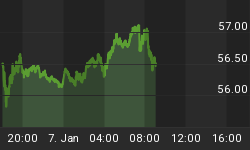Stock Trader's Almanac has been parsing equity market returns during the various years of the Presidential Cycle for decades; election years, pre- and post-election years, and mid-term years. The goal is to help equity investors to know when to expect highs and lows in the market based on what year of the cycle they happen to be interested in.
It occurred to me that comparing, for example, a mid-term year in a secular bear market to a mid-term year in a secular bull market might be the equivalent of comparing apples to oranges. Perhaps the results of examining matching years in the Presidential Cycle could be sharpened up by only looking at the results from those years which were in similar secular market cycles.
The beginning and ending dates of secular markets has always seemed to differ between analysts and no discipline (other than eye-balling the charts) ever seems to enter into the identification process. Given my studies of the work of George Lindsay I decided to use his Long Cycles as a method to identify secular markets. The result is that secular bear markets have occurred from 1921-1942, 1962-1982, and the current secular bear began at the 2002 low.
2013 is a post-election year. Combining market returns from post-election years only during secular bear markets resulted in the chart below. It confirms the results of the Three Peaks and Domed House forecast from last week's article.

Request your free copy of the August Lindsay Report at http://seattletechnicaladvisors.com/contactus.html
















